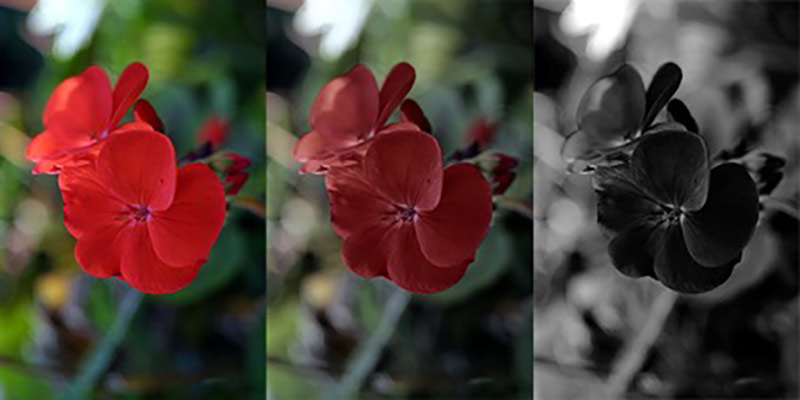By Linda Conlin, Pro to Pro Managing Editor
In addition to the solar eclipse, you may have experienced an optical phenomenon. If you wore red and green or were near red flowers and green grass during the eclipse, you may have noticed the Purkinje effect. Named for Bohemian physiologist Jan Evangelista Purkyně, who discovered it in 1819, the Purkinje effect is the tendency for the peak luminance sensitivity of the eye to shift toward the blue end of the color spectrum at low illumination as part of dark adaptation. In bright illumination, reds are more vivid, while blues and greens are duller. In lower illumination, the contrast is reversed. While this shift is gradual during normal daylight hours, about 30 to 45 minutes, the eclipse provided an opportunity to experience the effect within a few minutes.
The Purkinje effect occurs at the transition between photopic, cone-based vision in bright light, and scotopic, rod-based vision in low light. This transition is the mesopic state, or twilight vision. As intensity dims, the rods take over, and before color disappears completely, it shifts toward the rods' top sensitivity. The effect occurs because in mesopic conditions the outputs of cones in the retina, which are generally responsible for the perception of color in daylight, are combined with outputs of rods, which are more sensitive under low light conditions and have peak sensitivity in blue-green wavelengths around 500 nm. Because of the quick shift from light to dark during the eclipse, there isn’t enough time for the usual transition from cones to rods, and they briefly work simultaneously.
Purkinje contributed even more to our knowledge of the eye and vision. He identified reflections from the anterior and posterior surfaces of the cornea and the anterior and posterior surfaces of the crystalline lens, known as Purkinje images. They are used to detect both the movement and position of the patient's eye. The Purkinje tree is an image of the retinal blood vessels in one's own eye, first described by Purkinje in 1823. It can be seen by shining the beam of a small bright light through the pupil from the periphery of vision. This results in an image of the light being focused on the periphery of the retina. Light from this spot then casts shadows of the blood vessels that can be seen by the patient. Then there are Purkinje’s blue arcs, which he first observed after viewing fire embers in the dark. They consist of varying shades of blue arches. Researchers believe they arise in response to the stimulus of the blue-yellow wavelength systems, as from flames, and follow the nerve fiber layer. This phenomenon may be useful in diagnosing and monitoring early stages of glaucoma. Walks in his garden at dawn and gazing at his dying fire at night piqued Purkinje’s curiosity about our visual system and led to our greater understanding today!











